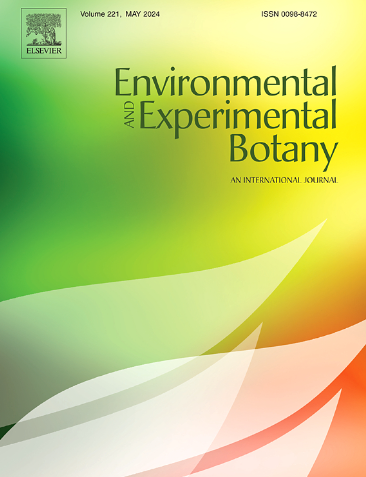三叶草MsGAI1-like-miR159a-MsMYB101模块诱导种子休眠释放的机制
IF 4.7
2区 生物学
Q2 ENVIRONMENTAL SCIENCES
引用次数: 0
摘要
三叶厚朴种子属于形态生理休眠型,在自然条件下极难萌发。赤霉素(giberellins, GAs)是促进种子休眠释放的关键物质。然而,ga介导三叶草种子休眠释放的调控机制尚不清楚。本研究通过形态学和生理学分析,揭示了外源GA3能够快速打破三叶绿足种子的生理休眠。为了研究miRNA159s在ga诱导的种子休眠释放中的作用,分离并鉴定了MsmiR159a及其靶基因MsMYB101。时空表达分析表明,MsmiR159a和MsMYB101具有相反的表达模式。MsmiR159a和MsMYB101之间存在相互作用。此外,我们发现GA信号通路的负调控因子GA- insensitive1 -like (MsGAI1-like)可直接结合miR159a的启动子来调节MsmiR159a/MsMYB101的表达。酵母单杂交和电泳迁移转移实验表明,MsMYB101直接结合到α -淀粉酶基因MsAMY2的启动子上。双荧光素酶报告基因检测显示,MsMYB101正调控MsAMY2的表达,说明MsmiR159a-MsMYB101模块通过影响淀粉代谢来促进种子休眠释放。总之,本研究阐明了MsGAI1-like-miR159a-MsMYB101网络响应三叶草种子休眠释放的潜在机制。这些发现为研究种子形态生理休眠的分子机制提供了新的思路。本文章由计算机程序翻译,如有差异,请以英文原文为准。
The mechanism of GA-induced seed dormancy release via MsGAI1-like-miR159a-MsMYB101 module in Magnolia sieboldii
Magnolia sieboldii K. Koch seeds belong to the morphophysiological dormancy type, and it is extremely difficult to germinate under natural conditions. Gibberellins (GAs) are crucial for facilitating seed dormancy release. However, the regulatory mechanisms by GA-mediated seed dormancy release in M. sieboldii remain unclear. Here, we reveal that exogenous GA3 could quickly break the physiological dormancy of M. sieboldii seeds through morphological and physiological analyses. To investigate the role of miRNA159s in GA-induced seed dormancy release, MsmiR159a and its target gene MsMYB101 were isolated and characterized. Spatial-temporal expression analyses showed that MsmiR159a and MsMYB101 had opposite expression patterns. A cleavage interaction between MsmiR159a and MsMYB101 was confirmed. Furthermore, we identified GA-INSENSITIVE1-like (MsGAI1-like), a negative regulator of GA signaling pathway, as directly binding to the promoter of miR159a to modulate the expression of MsmiR159a/MsMYB101. Yeast one-hybrid and electrophoretic mobility shift assays demonstrated that MsMYB101 directly binds to the promoter of the alpha-amylase gene MsAMY2. Dual-luciferase reporter assay indicated that MsMYB101 positively regulates MsAMY2 expression, suggesting that MsmiR159a-MsMYB101 module contributes to seed dormancy release by influencing starch metabolism. In conclusion, this study elucidates the potential mechanism underlying the response of the MsGAI1-like-miR159a-MsMYB101 network to dormancy release in M. sieboldii seeds. These findings provide new insights into the molecular mechanisms of morphophysiological dormancy seeds.
求助全文
通过发布文献求助,成功后即可免费获取论文全文。
去求助
来源期刊

Environmental and Experimental Botany
环境科学-环境科学
CiteScore
9.30
自引率
5.30%
发文量
342
审稿时长
26 days
期刊介绍:
Environmental and Experimental Botany (EEB) publishes research papers on the physical, chemical, biological, molecular mechanisms and processes involved in the responses of plants to their environment.
In addition to research papers, the journal includes review articles. Submission is in agreement with the Editors-in-Chief.
The Journal also publishes special issues which are built by invited guest editors and are related to the main themes of EEB.
The areas covered by the Journal include:
(1) Responses of plants to heavy metals and pollutants
(2) Plant/water interactions (salinity, drought, flooding)
(3) Responses of plants to radiations ranging from UV-B to infrared
(4) Plant/atmosphere relations (ozone, CO2 , temperature)
(5) Global change impacts on plant ecophysiology
(6) Biotic interactions involving environmental factors.
 求助内容:
求助内容: 应助结果提醒方式:
应助结果提醒方式:


